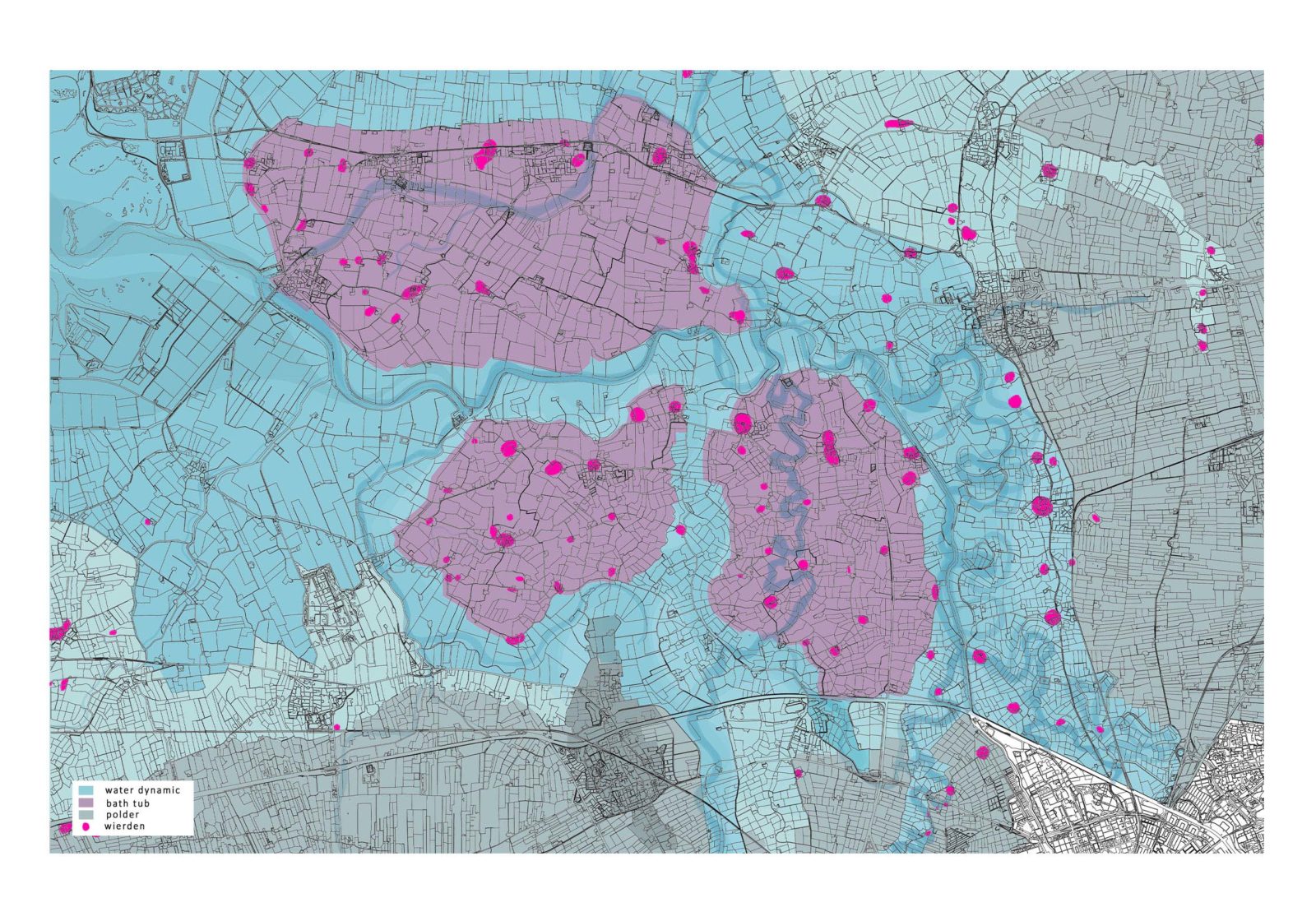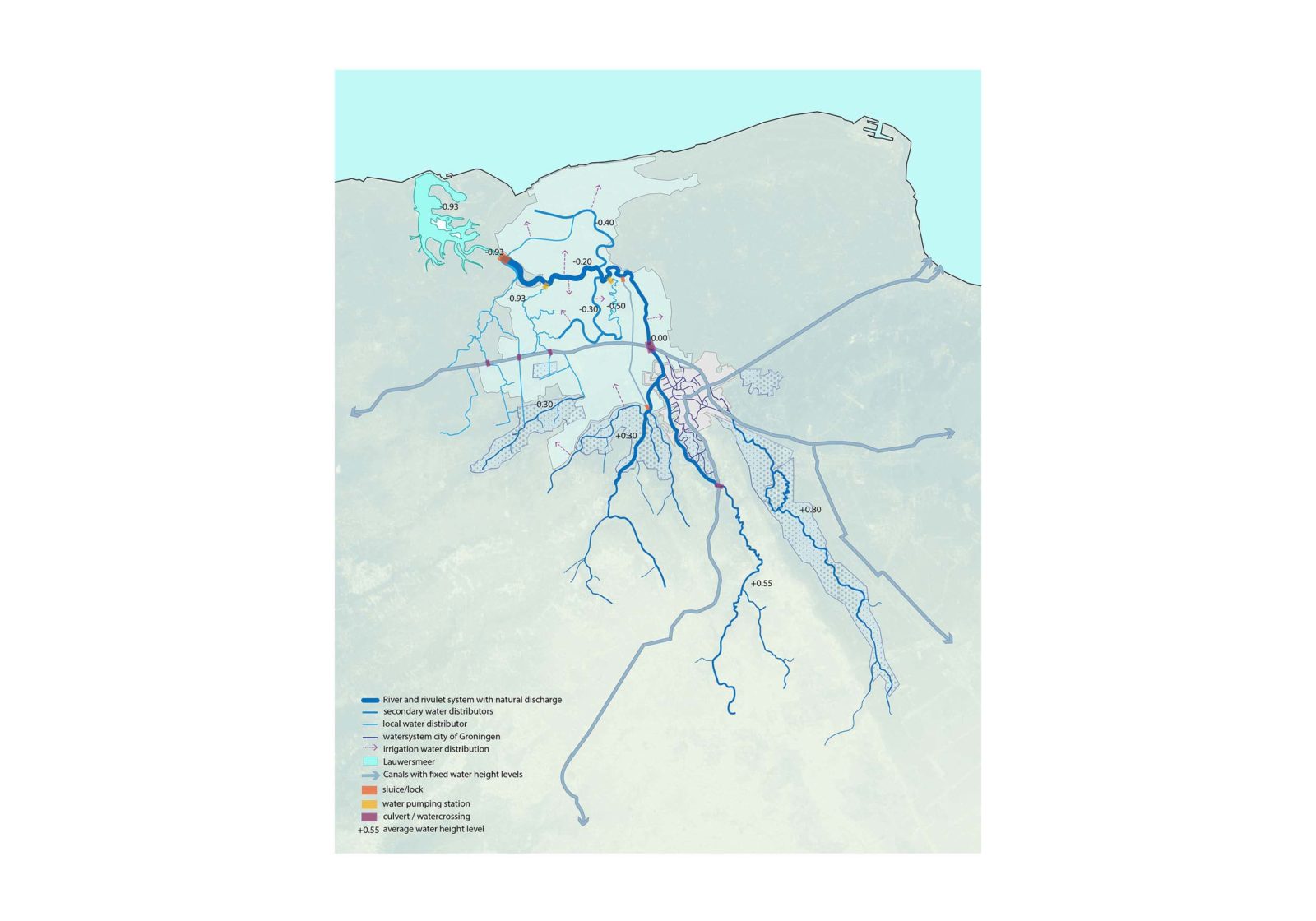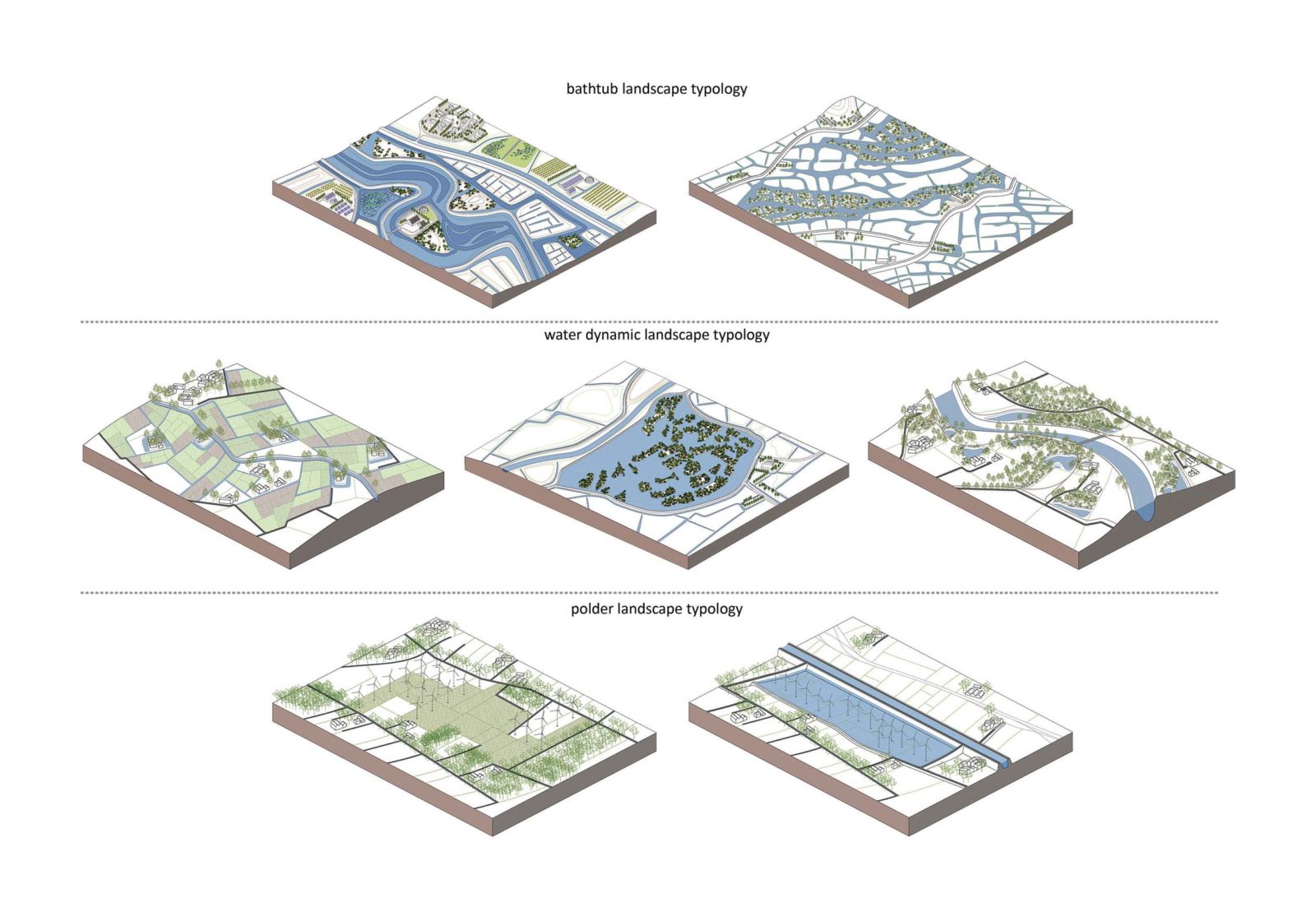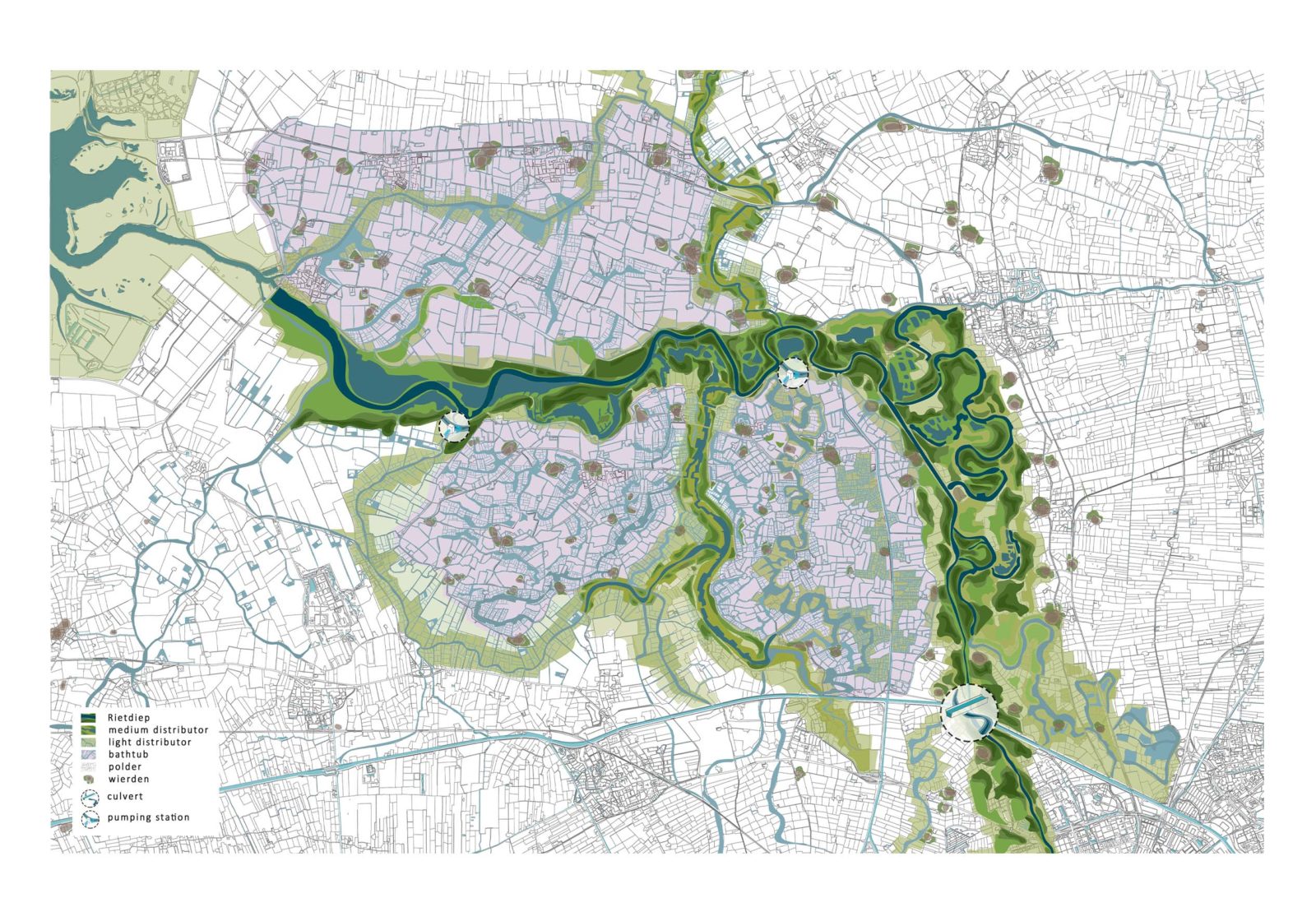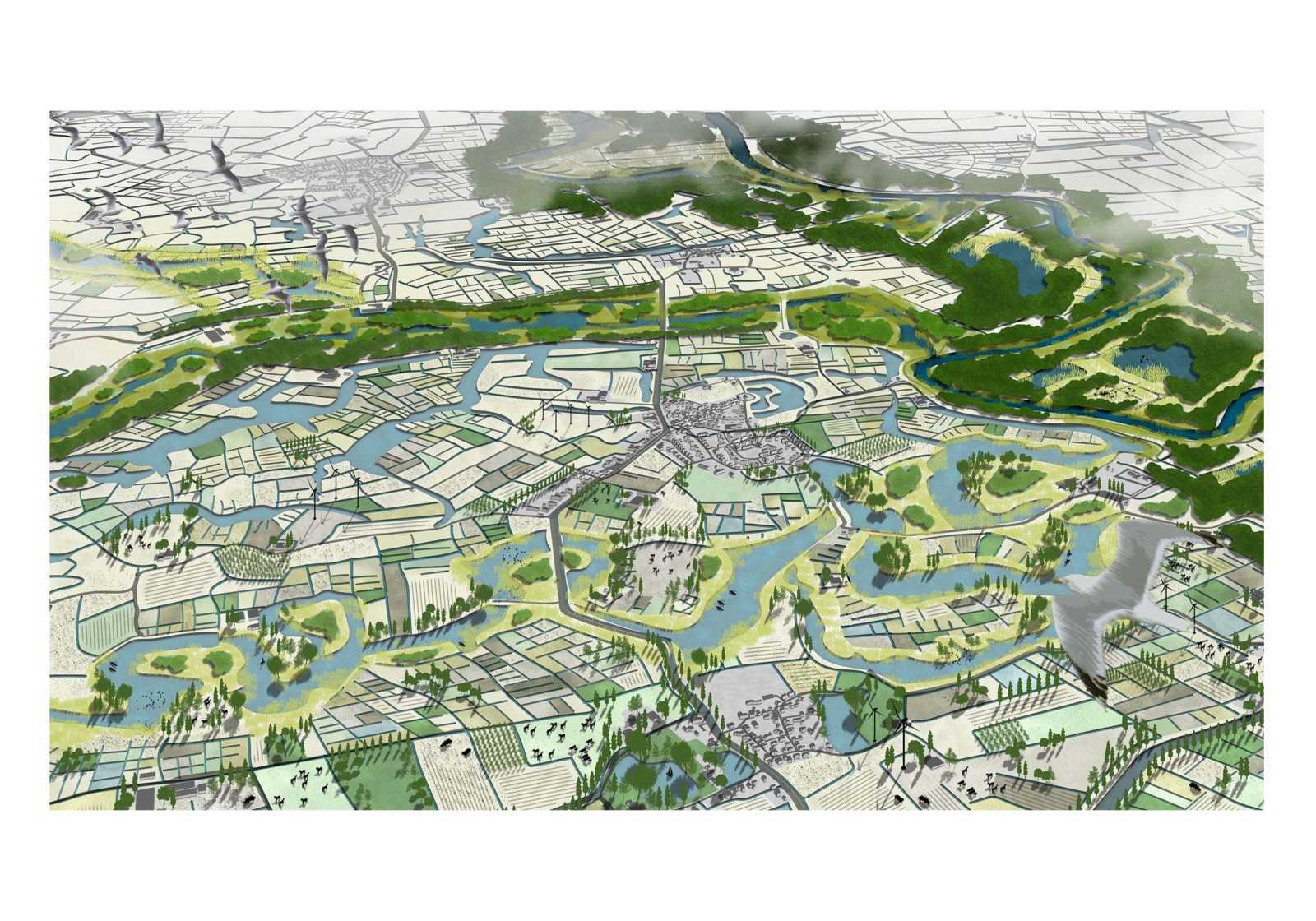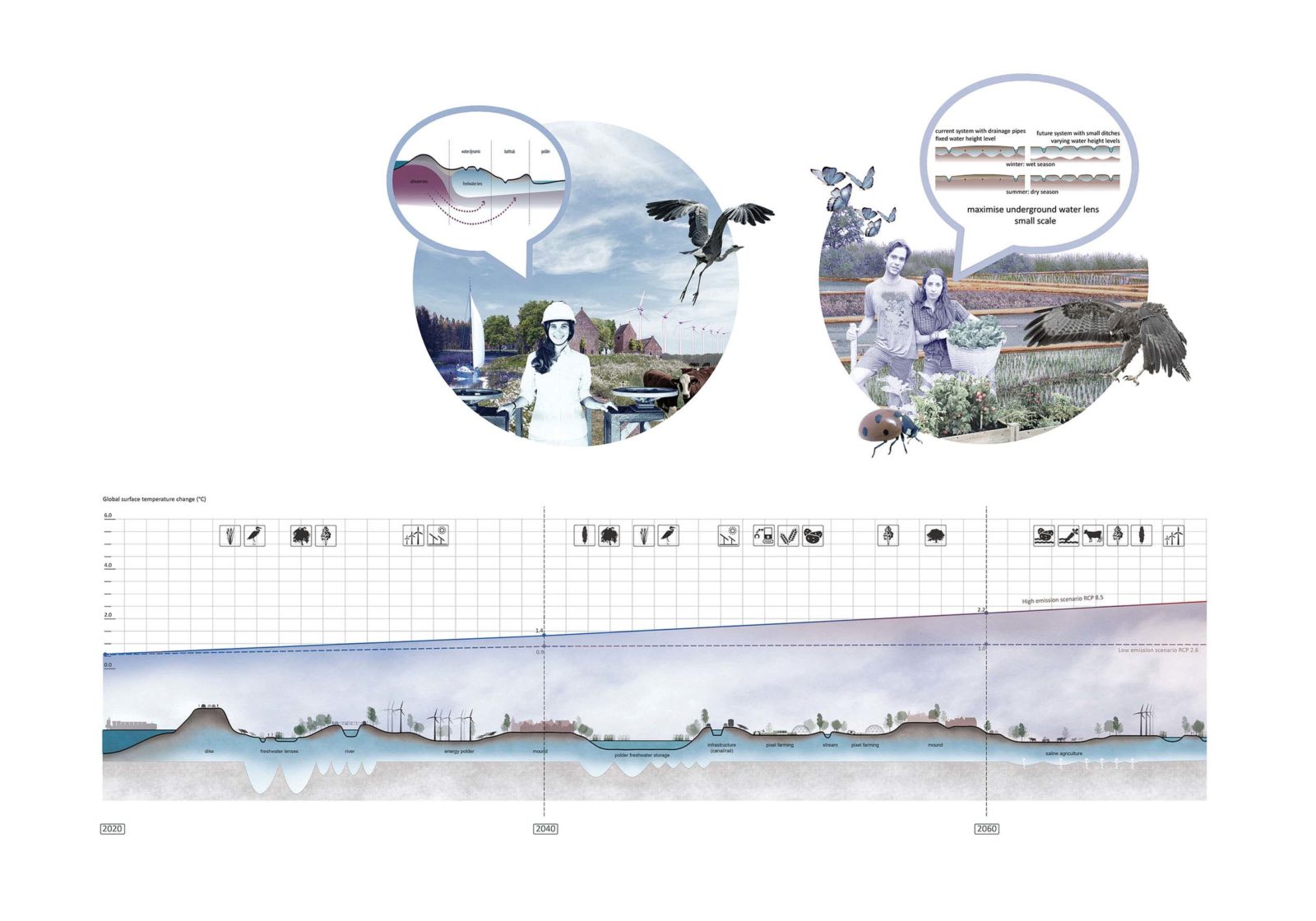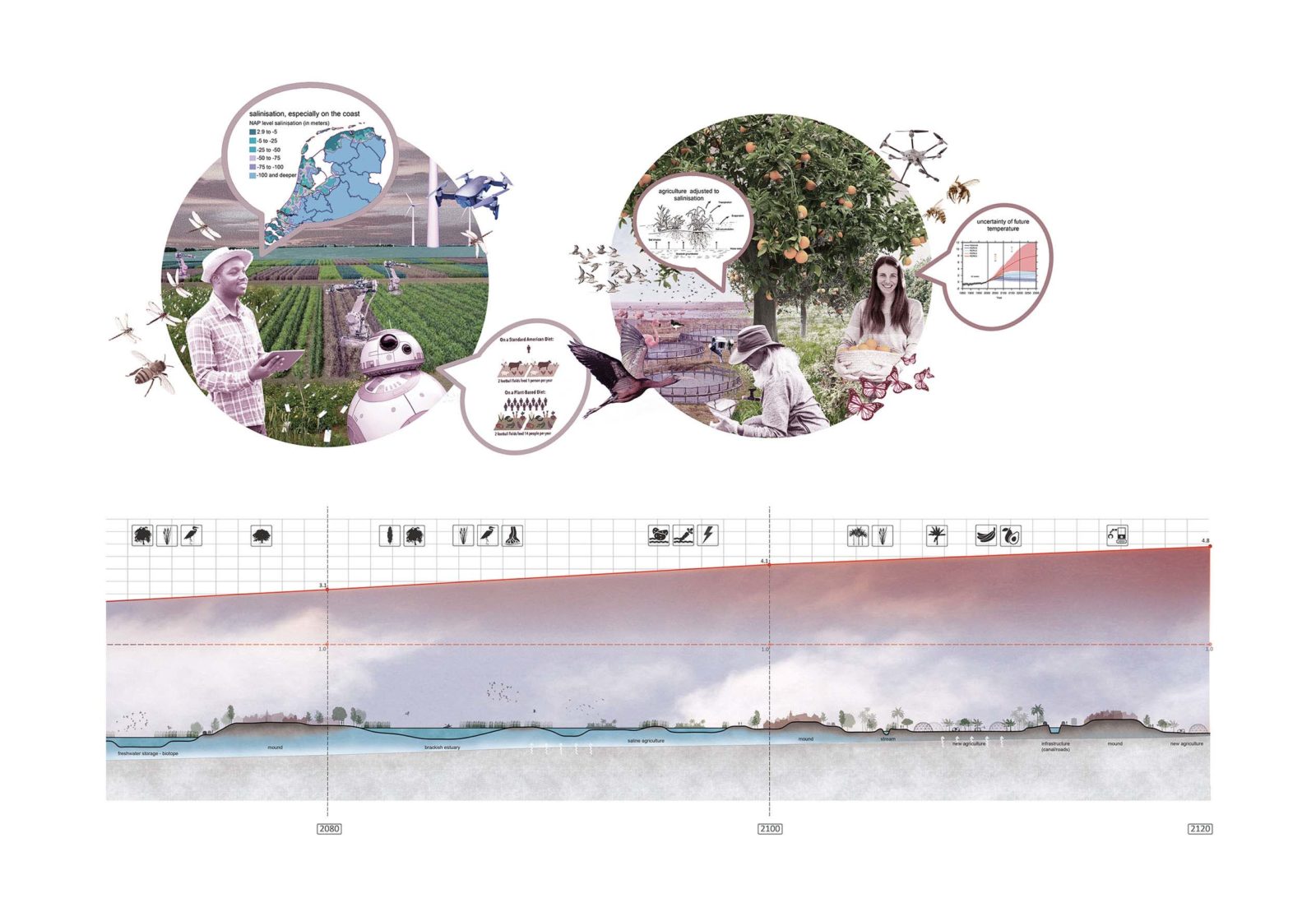++Water Heritage
Location
Rietdiep, Groningen
Project type
Landscape vision
Year
2020-2021
Client
Act & Adapt Klimaat Adaptatie Groningen, GRAS, Provincie Groningen, Gemeente Groningen, Nationaal Programma Groningen
Collaborators
MORE Landscape
Climate change is already a fact progressing rapidly in the 21st century with constant sea level rise and groundwater salinization, extreme rainfall and drought phenomena and a substantial temperature rise that will forever change the landscape as we know it. So how can design work towards this direction, creating a long-term sustainable framework while adapting to the inevitable changes and welcoming the future? MORE Landscape invited VE-R to jointly make a vision for the Reidiep River area in Groningen as part of the Act & Adapt Climate Adaptation Summit 2021 considering climate adaptation in the coming 100 years in a precious heritage landscape.
Alternating periods of fresh and salt water influences have shaped this area into three distinct landscape typologies: 1. the water dynamic typology of elevated sandy zones on former river valleys, 2. the low-lying “islands”-bathtub typology with clay soils and 3. the polder landscape less influenced by water dynamics. These typologies became the basis for the creation of a robust water system in our vision for the future.
Through different interventions that highlight the unique identity of each landscape typology, salinization is temporarily held back thanks to large underground freshwater lenses while water retention possibilities are offered in the form of big former creek meanders or small densified ditches, providing irrigation for a large agricultural area. A wide, rich in biodiversity green/blue zone around the Rietdiep river creates contrast with the small-scale landscape of the three “islands”, while the lower-lying polders turn into large energy production areas. The current fixed water system is replaced by a flexible, dynamic one. The water dynamics that always formed this landscape are used in our vision to increase value again in the future; the value of cultural heritage, landscape experience, biodiversity and a new form of agriculture with smaller scale, more crop variety and a lower CO2 footprint. We increase the characteristics and identity of the landscape, by retaining a maximum of fresh water, on the large and small scale, that holds back the upcoming salinisation. At the same time, the landscape changes to adapt to climate change with agriculture transforming towards a more resilient land use, because over time the expected temperature rise of ca. 4°C and the gradual intrusion of salinity bring an inevitable shift in agriculture with more salt-resistant mediterranean crops.

